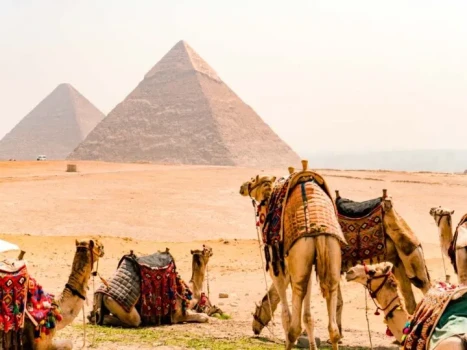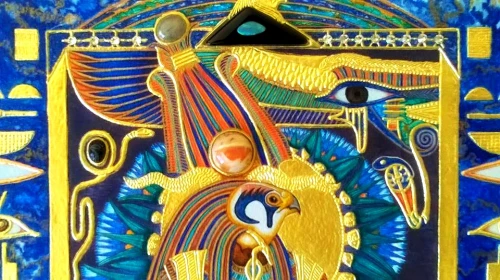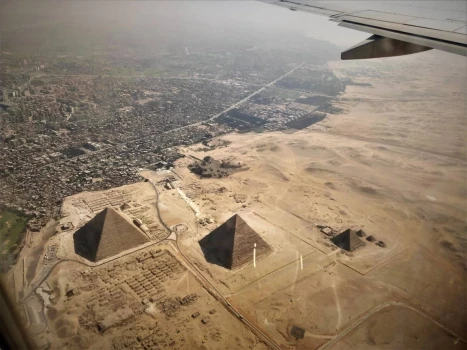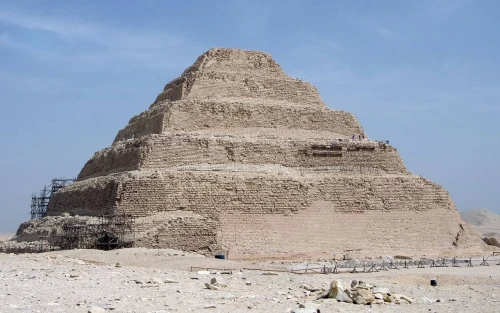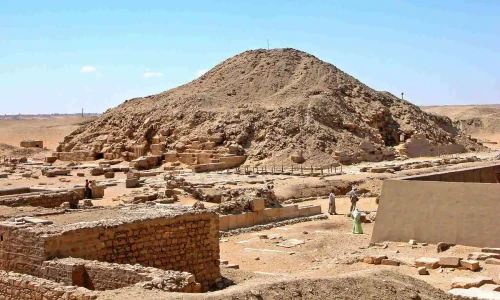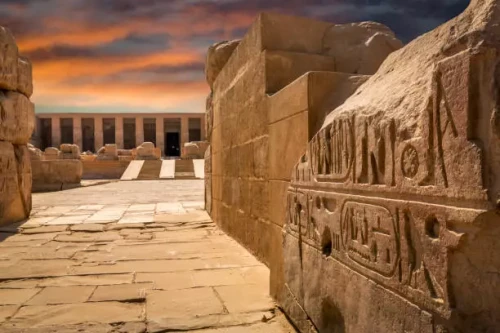
From the Predynastic era of Egypt to the Christian era, Abydos, the most sacred city in Egypt, served as a centre for religious activities. It was close to modern-day Sohag on the West Bank of the Nile. At the conclusion of the Old Kingdom, Abydos was the first and most important centre of worship when OSIRIS gained popularity. Osiris's body was allegedly divided into pieces and dispersed over Egypt. According to legend, Abydos is where Osiris's head was interred.
The oldest buildings in Abydos are the tombs of the Predynastic and Early Dynastic monarchs of Egypt. The first pharaohs, whose burial places are unknown, came from a nearby town and were buried at Abydos. The Osiris-Khentimentiu temple, which was constructed in memory of a jackal god who had originally been associated with Osiris, is where the earliest remains that may still be seen today can be found. The name Khentimentiu, which translates to "foremost of the Westerners," emphasises Osiris' role as a kind burial god (the west was reserved for the dead).
Several wooden boats and early Dynastic royal tombs have also been discovered during investigations. The First Dynasty king Djer's mud-brick tomb, according to ancient Egyptians, was where Osiris' remains were interred. This could have increased awareness of the Osiris cult. The OSIREION, the most impressive memorial to Osiris in Abydos, is a chapel constructed of massive granite stones that is believed to be his imagined tomb or cenotaph. Throughout the Middle Kingdom (2055–1650 B.C.), pilgrims made their way to Abydos, and many of them left STELE, or offering tablets, for Osiris that were etched with their names and prayers.
Abydos served as the focal point of the "mysteries," which were intense dramas based on the life of Osiris. Abydos evolved into a sacred location with both literal and symbolic meaning. As a chorus of people prayed, the assembly ignited lamps to represent Isis' search for her husband's remains. Osiris was the first mummy and was believed to be the first person to resurrect. He became the ruler of the NETHERWORLD, a realm that was only accessible to Osiris. The fertility god and the patron of the dead was Osiris. In tomb paintings, he is typically shown as a mummy with green skin and his arms crossed over his chest. The pole with two plumes and animal skin covering that represented Osiris at Abydos was also connected to ANUBIS.
The Second Dynasty kings Peribsen and Khasekhemwy constructed their tombs in Abydos to be close to Osiris' last resting place.
Today, the most significant building in Abydos is thought to be the TEMPLE OF SETI, the father of Ramses II. No other Egyptian temple compares to the carvings and hues in the temple of Seti I, the first pharaoh of the Nineteenth Dynasty (1295–1186 B.c.). Because it has been so wonderfully maintained, visitors can examine the ancient religious rites depicted on the walls of the seven chapels.
The huge staircase is the only way to access the temple because there aren't any towers in front of it. Within, there are seven aisles that lead to seven chapels, each of which is consecrated to a different deity, including Seti I. At the entrance to each chapel, there is a carving of Seti I and the god to whom that chapel is dedicated. The Chapel of Osiris, the third structure on the right, is where one can see the king engaging in customary Osiris Cult ceremonies. With holy oil, Seti is represented as the acting high priest. Seti enters the shrine holding an oil lamp and an incense pipe to illuminate the revered darkness of the cover while wearing a simple kilt.
The monarch approaches the Osiris shrine while reciting prayers; he unlocks the sacred shrine's doors; the deity, who is represented by a cult statue, is welcomed with morning songs, given food and drink, and incense is burned. The god's representation is adorned with the finest linen and valuable oil. God is transformed back into an aegis, a little shield, when additional prayers are performed. The aegis was a symbol of protection to the Egyptians, who frequently adorned the prows of their boats with it.
His temple. The king bows and walks away while sweeping up his footprints. Each of the other six chapels, which are devoted to Horus, Isis (the wife of Osiris and the mother of Horus), AMUN-RE (the great deity of Thebes), RE-HORAKHTY (Horus of the Horizon), PTAH (the creator god), and Seti I, feature a repetition of this procedure. The king conducts the rituals in front of a cult statue of himself in the chapel of Seti I.
 English
English
 Spain
Spain

